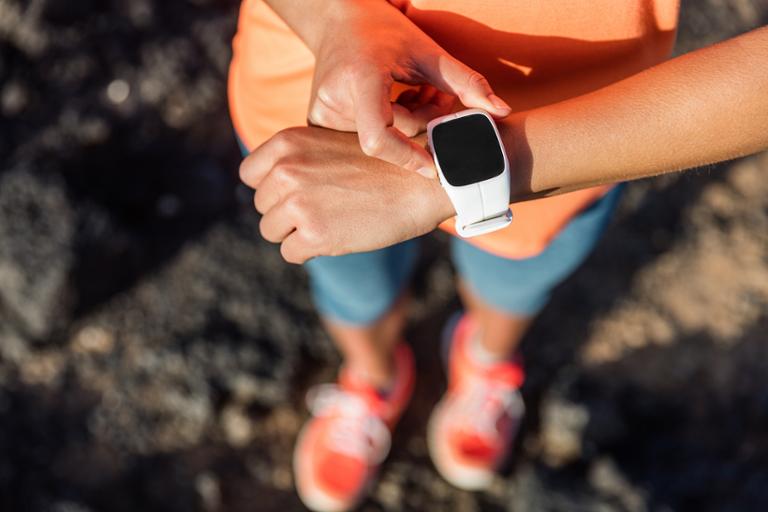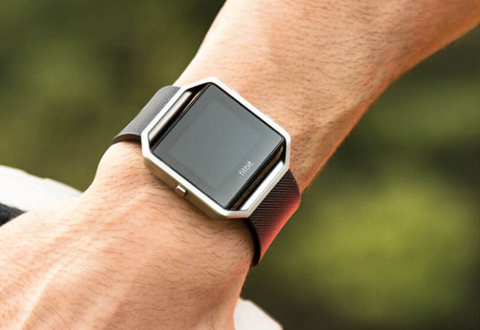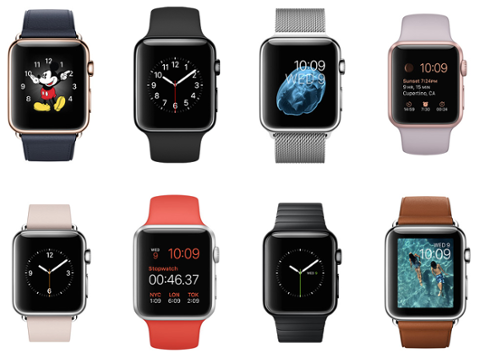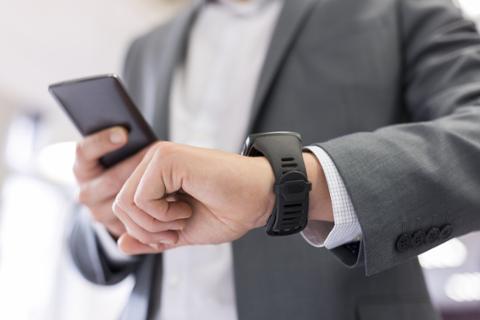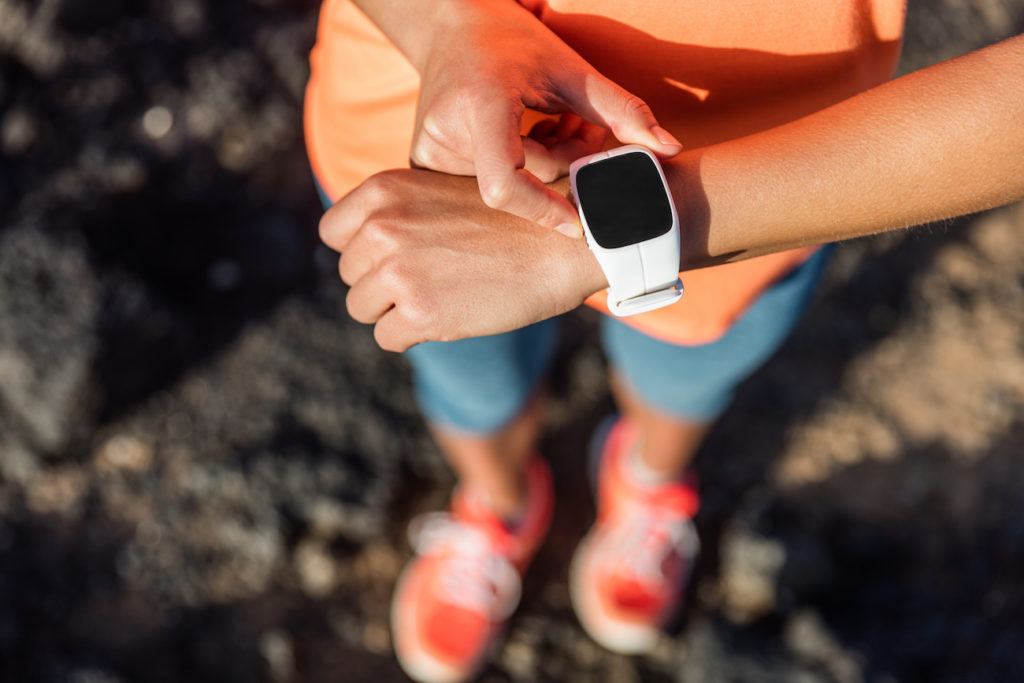 If you’re a tech pro who’s interested in health technology, there are a few exciting arenas at the moment. One of the biggest is wearables, where a variety of companies — including Apple and FitBit — are rushing to build smartwatches and wristbands that can monitor the wearer’s vital signs. But how accurate are these devices? According to a new study by Stanford University, most brands’ hardware is very good at measuring heartbeat… but other metrics, not so much. The research team evaluated the Apple Watch, Basis Peak, Microsoft Band, Fitbit Surge, Mio Alpha 2, PulseOn, and Samsung Gear S2. Sixty volunteers (31 women and 29 men) wore these seven devices while exercising; for a baseline, their hearts were measured via a medical-grade electrocardiograph, and their metabolic rate through a specialized instrument that monitors the oxygen and carbon dioxide levels in breathing. “None of the seven devices measured energy expenditure accurately,” reported the University’s posting on the matter. “Even the most accurate device was off by an average of 27 percent. And the least accurate was off by 93 percent.” In other words, modern wearable hardware is really bad at counting calories (the technical unit of energy expenditure). And to be fair, your FitBit or Apple Watch isn’t a medical-grade device, and shouldn’t be held to the same standards. But even so, these brands market their wearables on their supposed accuracy, which makes a report like the Stanford one a little disconcerting. “All we can do is see how the devices perform against the gold-standard clinical measures,” said graduate student Anna Shcherbina, one of the researchers involved in the study. “My take on this is that it’s very hard to train an algorithm that would be accurate across a wide variety of people because energy expenditure is variable based on someone’s fitness level, height and weight, etc.” Fitbit responded to Stanford’s study with a lengthy statement to TechCrunch. “Fitbit trackers show an estimated total number of calories burned based on users’ BMR (basal metabolic rate) and activity energy expenditure (AEE),” the company wrote. “Fitbit uses a scientifically validated estimate of BMR based on height, weight, age, and gender information that users provide when setting up their Fitbit account.” In other words: It’s an estimate, okay? But that can’t come as good news to anyone who thought their wearable was feeding them highly individualized data about their physical activity. For tech pros interested in building wearables and other bits of health-monitoring tech — either on the hardware or software side — this Stanford study reaffirms that there lots of areas where much more research and development is needed. Someone out there is going to build the better calorie-monitor… and when they do, the fitness world is theirs.
If you’re a tech pro who’s interested in health technology, there are a few exciting arenas at the moment. One of the biggest is wearables, where a variety of companies — including Apple and FitBit — are rushing to build smartwatches and wristbands that can monitor the wearer’s vital signs. But how accurate are these devices? According to a new study by Stanford University, most brands’ hardware is very good at measuring heartbeat… but other metrics, not so much. The research team evaluated the Apple Watch, Basis Peak, Microsoft Band, Fitbit Surge, Mio Alpha 2, PulseOn, and Samsung Gear S2. Sixty volunteers (31 women and 29 men) wore these seven devices while exercising; for a baseline, their hearts were measured via a medical-grade electrocardiograph, and their metabolic rate through a specialized instrument that monitors the oxygen and carbon dioxide levels in breathing. “None of the seven devices measured energy expenditure accurately,” reported the University’s posting on the matter. “Even the most accurate device was off by an average of 27 percent. And the least accurate was off by 93 percent.” In other words, modern wearable hardware is really bad at counting calories (the technical unit of energy expenditure). And to be fair, your FitBit or Apple Watch isn’t a medical-grade device, and shouldn’t be held to the same standards. But even so, these brands market their wearables on their supposed accuracy, which makes a report like the Stanford one a little disconcerting. “All we can do is see how the devices perform against the gold-standard clinical measures,” said graduate student Anna Shcherbina, one of the researchers involved in the study. “My take on this is that it’s very hard to train an algorithm that would be accurate across a wide variety of people because energy expenditure is variable based on someone’s fitness level, height and weight, etc.” Fitbit responded to Stanford’s study with a lengthy statement to TechCrunch. “Fitbit trackers show an estimated total number of calories burned based on users’ BMR (basal metabolic rate) and activity energy expenditure (AEE),” the company wrote. “Fitbit uses a scientifically validated estimate of BMR based on height, weight, age, and gender information that users provide when setting up their Fitbit account.” In other words: It’s an estimate, okay? But that can’t come as good news to anyone who thought their wearable was feeding them highly individualized data about their physical activity. For tech pros interested in building wearables and other bits of health-monitoring tech — either on the hardware or software side — this Stanford study reaffirms that there lots of areas where much more research and development is needed. Someone out there is going to build the better calorie-monitor… and when they do, the fitness world is theirs. How Wearables Have Room for Improvement
 If you’re a tech pro who’s interested in health technology, there are a few exciting arenas at the moment. One of the biggest is wearables, where a variety of companies — including Apple and FitBit — are rushing to build smartwatches and wristbands that can monitor the wearer’s vital signs. But how accurate are these devices? According to a new study by Stanford University, most brands’ hardware is very good at measuring heartbeat… but other metrics, not so much. The research team evaluated the Apple Watch, Basis Peak, Microsoft Band, Fitbit Surge, Mio Alpha 2, PulseOn, and Samsung Gear S2. Sixty volunteers (31 women and 29 men) wore these seven devices while exercising; for a baseline, their hearts were measured via a medical-grade electrocardiograph, and their metabolic rate through a specialized instrument that monitors the oxygen and carbon dioxide levels in breathing. “None of the seven devices measured energy expenditure accurately,” reported the University’s posting on the matter. “Even the most accurate device was off by an average of 27 percent. And the least accurate was off by 93 percent.” In other words, modern wearable hardware is really bad at counting calories (the technical unit of energy expenditure). And to be fair, your FitBit or Apple Watch isn’t a medical-grade device, and shouldn’t be held to the same standards. But even so, these brands market their wearables on their supposed accuracy, which makes a report like the Stanford one a little disconcerting. “All we can do is see how the devices perform against the gold-standard clinical measures,” said graduate student Anna Shcherbina, one of the researchers involved in the study. “My take on this is that it’s very hard to train an algorithm that would be accurate across a wide variety of people because energy expenditure is variable based on someone’s fitness level, height and weight, etc.” Fitbit responded to Stanford’s study with a lengthy statement to TechCrunch. “Fitbit trackers show an estimated total number of calories burned based on users’ BMR (basal metabolic rate) and activity energy expenditure (AEE),” the company wrote. “Fitbit uses a scientifically validated estimate of BMR based on height, weight, age, and gender information that users provide when setting up their Fitbit account.” In other words: It’s an estimate, okay? But that can’t come as good news to anyone who thought their wearable was feeding them highly individualized data about their physical activity. For tech pros interested in building wearables and other bits of health-monitoring tech — either on the hardware or software side — this Stanford study reaffirms that there lots of areas where much more research and development is needed. Someone out there is going to build the better calorie-monitor… and when they do, the fitness world is theirs.
If you’re a tech pro who’s interested in health technology, there are a few exciting arenas at the moment. One of the biggest is wearables, where a variety of companies — including Apple and FitBit — are rushing to build smartwatches and wristbands that can monitor the wearer’s vital signs. But how accurate are these devices? According to a new study by Stanford University, most brands’ hardware is very good at measuring heartbeat… but other metrics, not so much. The research team evaluated the Apple Watch, Basis Peak, Microsoft Band, Fitbit Surge, Mio Alpha 2, PulseOn, and Samsung Gear S2. Sixty volunteers (31 women and 29 men) wore these seven devices while exercising; for a baseline, their hearts were measured via a medical-grade electrocardiograph, and their metabolic rate through a specialized instrument that monitors the oxygen and carbon dioxide levels in breathing. “None of the seven devices measured energy expenditure accurately,” reported the University’s posting on the matter. “Even the most accurate device was off by an average of 27 percent. And the least accurate was off by 93 percent.” In other words, modern wearable hardware is really bad at counting calories (the technical unit of energy expenditure). And to be fair, your FitBit or Apple Watch isn’t a medical-grade device, and shouldn’t be held to the same standards. But even so, these brands market their wearables on their supposed accuracy, which makes a report like the Stanford one a little disconcerting. “All we can do is see how the devices perform against the gold-standard clinical measures,” said graduate student Anna Shcherbina, one of the researchers involved in the study. “My take on this is that it’s very hard to train an algorithm that would be accurate across a wide variety of people because energy expenditure is variable based on someone’s fitness level, height and weight, etc.” Fitbit responded to Stanford’s study with a lengthy statement to TechCrunch. “Fitbit trackers show an estimated total number of calories burned based on users’ BMR (basal metabolic rate) and activity energy expenditure (AEE),” the company wrote. “Fitbit uses a scientifically validated estimate of BMR based on height, weight, age, and gender information that users provide when setting up their Fitbit account.” In other words: It’s an estimate, okay? But that can’t come as good news to anyone who thought their wearable was feeding them highly individualized data about their physical activity. For tech pros interested in building wearables and other bits of health-monitoring tech — either on the hardware or software side — this Stanford study reaffirms that there lots of areas where much more research and development is needed. Someone out there is going to build the better calorie-monitor… and when they do, the fitness world is theirs. 